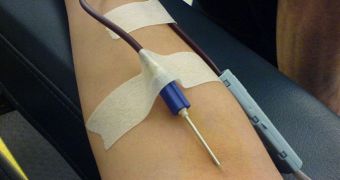A group of investigators announces the development of a new blood-analysis techniques, that allows doctors to use dried-up blood for their analysis, rather than vials of the stuff in its liquid form.
The discovery could have significant repercussions, since it could be used to advance research into infant pharmacology and also into developing more efficient drug test for athletes in competitions.
When developing custom drug for newborns and infants, researchers are often faced with a dilemma. They need blood from their patients, but the little ones cannot spare too much at the same time.
As such, most of the research conducted for babies is based on extrapolation and guesswork. But, with the aid of the new research technique, that could soon change. Doctors may finally become able to analyze all the blood they need.
This will be very important when researchers will begin to analyze the effects that chemicals such as morphine have on little babies. Until now, studying this has been virtually impossible.
The new approach, its creators say, only requires a few drops of dried blood to conduct a thorough chemical analysis of all the elements in the sample. As such, researchers will only need a small amount of blood from their patients.
In addition to its applications in pediatric medicine, the method could also help revolutionize the approach to diagnosing conditions such as HIV infection. Sports officials could use it to test athletes following competitions.
The research group that developed the method is based at the University of Colorado, in the United States, and was led by anesthesiologist Jeffrey Galinkin. He developed a way of using a technique called liquid chromatography-mass spectrometry (LC-MS/MS) for blood analysis.
The team admits that some blood elements will still have to be counted in freshly-harvested samples, but says that, for a wide array of practical applications, the new technology will suffice.
LC-MS/MS works by ionizing atoms in the dry blood. Once the ions are produced, the mass spectrometer can easily count them, and detect from which chemical they came.
“Anything that can help us to gain in sensitivity and limit the volume of biological fluids is certainly of high interest to us,” says the science director of the World Anti-Doping Agency, Oliver Rabin.
Galinkin presented his findings at the annual meeting of the American Society of Anesthesiologists, which was held this October, Technology Review reports.

 14 DAY TRIAL //
14 DAY TRIAL //